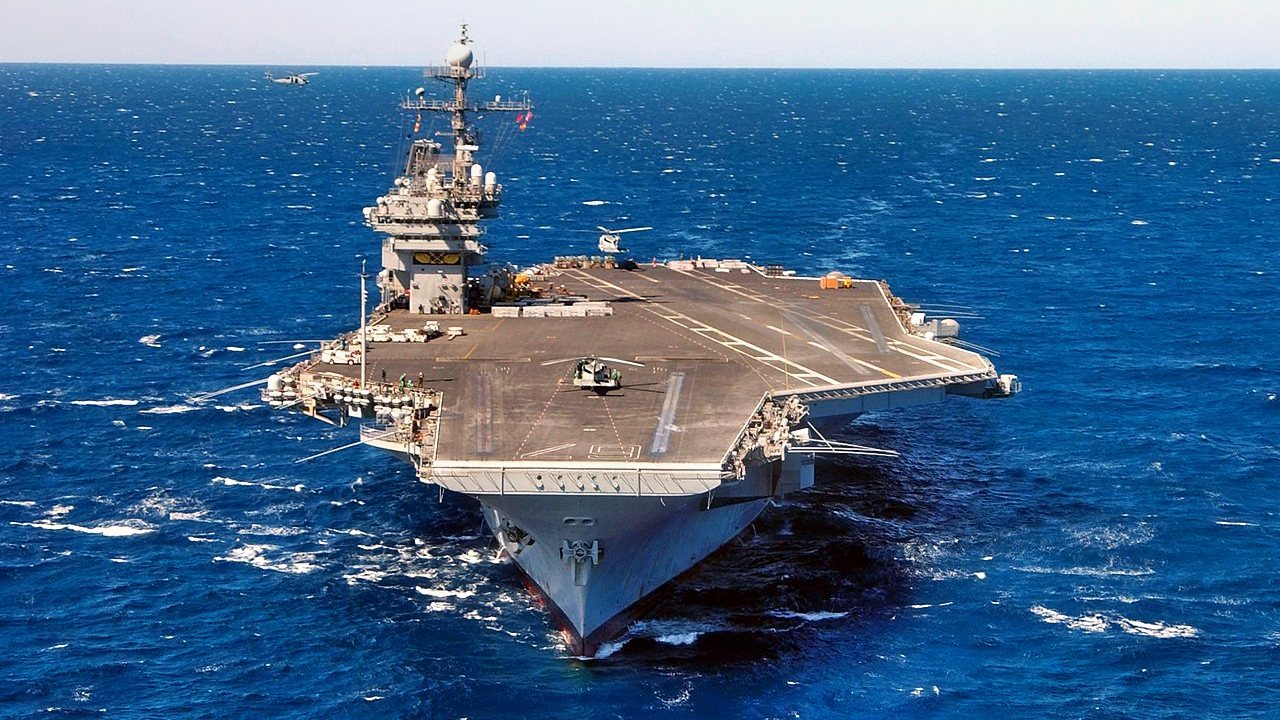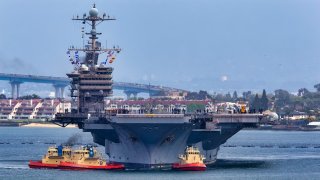What Happens If a "Carrier Killer" Missile Hits a U.S. Navy Aircraft Carrier?
The vulnerability of U.S. Navy nuclear-powered aircraft carriers to "carrier killer" missiles developed by China and Russia raises concerns about safety, environmental risks, and the potential for catastrophic damage.
Summary: The vulnerability of U.S. Navy nuclear-powered aircraft carriers to "carrier killer" missiles developed by China and Russia raises concerns about safety, environmental risks, and the potential for catastrophic damage. Despite the Navy's assurances of robust safety features in their reactors, the unpredictable outcomes of a successful missile strike create significant uncertainties. The reactors are designed to withstand extreme conditions, but the real-world implications of a direct hit remain unknown. Such an event could result in massive loss of life, complex rescue operations, and substantial environmental impacts, especially if it occurs in strategically sensitive or shallow waters.
Exploring the Risks: U.S. Navy Carriers and the Threat of "Carrier Killer" Missiles
There are countless hypothetical scenarios regarding how a U.S. Navy warship could be sunk – and no doubt it likely keeps some officials up at night. Beyond the strategic value of a warship, there is its monetary cost and the potential loss of lives.
All of those are serious issues regardless of the size of the vessel but are compounded greatly with the U.S. Navy's nuclear-powered aircraft carriers – not just because of the high strategic value, large crew, and astronomical costs. There is a potential environmental catastrophe should a nuclear carrier's reactor be successfully targeted. China has been developing its so-called "carrier killer" missiles, while Russia has also developed anti-ship missiles.
It might be difficult for such a weapon to strike a carrier with precision, but we shouldn't see it as impossible.
Nuclear Safety
The United States Navy has tried to reassure the American public – as well as the Japanese public as there is typically a forward-deployed carrier based in the Far East – that carriers are safe.
"U.S. Nuclear Powered Warships (NPWs) have safely operated for more than 50 years without experiencing any reactor accident or any release of radioactivity that hurt human health or had an adverse effect on marine life. Naval reactors have an outstanding record of over 134 million miles safely steamed on nuclear power, and they have amassed over 5700 reactor-years of safe operation," the U.S. Embassy & Consulates in Japan wrote.
According to the U.S. Navy's statement on NPW, there are at least four barriers that work to keep radioactivity inside the ship, even in the highly unlikely event of a problem involving the reactor. Those barriers include the fuel itself, the all-welded reactor primary system including the reactor pressure vessel containing the fuel, the reactor compartment, and the ship's hull.
The NPW describes the barriers as being highly robust, resilien,t and conservatively designed compared to those in civilian reactors due to the fundamental differences in mission.
"U.S. naval nuclear fuel is solid metal. The fuel is designed for battle shock and can withstand combat shock loads greater than 50 times the force of gravity without releasing fission products produced inside the fuel. This is greater than 10 times the earthquake shock loads used for designing U.S. commercial nuclear power plants. With the high integrity fuel design, fission products inside the fuel are never released into the primary coolant. This is one of the outstanding differences from commercial reactors, which normally have a small amount of fission products released from the fuel into the primary coolant," the NPW fact sheet explains.
We Don't Know What We Don't Know
The U.S. Navy touts the safety features of the reactors, but it doesn't take into account what happens if a carrier killer missile is successful in striking a carrier.
To paraphrase the late former Secretary of Defense Donald Rumsfield, when it comes to what happens if an enemy missile successfully were to strike a carrier, "we don't know what we don't know." In other words, we have no idea what will happen in such an unthinkable scenario.
It would likely cripple the ship, kill perhaps thousands instantly, and present serious problems including even mounting a rescue.
Simply rescuing the survivors – those who survived the initial attack – might even be impossible. The size of the crews is so large that the escorts barely have the room to accommodate the survivors and remain combat effective. As Forbes.com reported last year, in-battle recovery of a badly damaged carrier would be unlikely, and that's if the reactor core wasn't breeched.
"Add in the complexities of managing survivors potentially contaminated by radioactivity from the hurt carrier's nuclear power plant, and a well-meaning rescue effort can quickly become a fiasco," Craig Hooper wrote for Forbes.com.

As noted by Maya Carlin, writing for The National Interest, the closest we can get to understanding what we might be facing is the nine submarines powered by nuclear energy that have been destroyed either by accident or scuttling. Among these was the U.S. Navy's USS Thresher, which sank during trials in April 1962.
"U.S. Navy experts assert there is no sign that the 50-year-old wreckage of the USS Thresher – including its nuclear propulsion system – created an environmental hazard," wrote Carlin, who added, "While the destruction of a nuclear-powered aircraft carrier would certainly look different than a sunk submarine or a site where spent fuel has leaked, the potential ecological ramifications are of equal concern."
Finally, the environmental damage might depend on where a nuclear-powered carrier was sunk. In the middle of the Pacific, the damage might be far less – given the depths of the ocean. It should be remembered there was a time when nuclear tests were conducted in remote islands of the Pacific. Yet, in the littoral waters of the South China Sea, the problem could be far more significant. Given that those are the same waters claimed by Beijing could be enough that it would seek to cripple a U.S. carrier without setting off a chain reaction resulting in a nuclear disaster close to its shores.
Author Experience and Expertise: Peter Suciu
Peter Suciu is a Michigan-based writer. He has contributed to more than four dozen magazines, newspapers, and websites with over 3,200 published pieces over a twenty-year career in journalism. He regularly writes about military hardware, firearms history, cybersecurity, politics, and international affairs. Peter is also a Contributing Writer for Forbes and Clearance Jobs. You can follow him on Twitter: @PeterSuciu.
You can email the author: [email protected].


